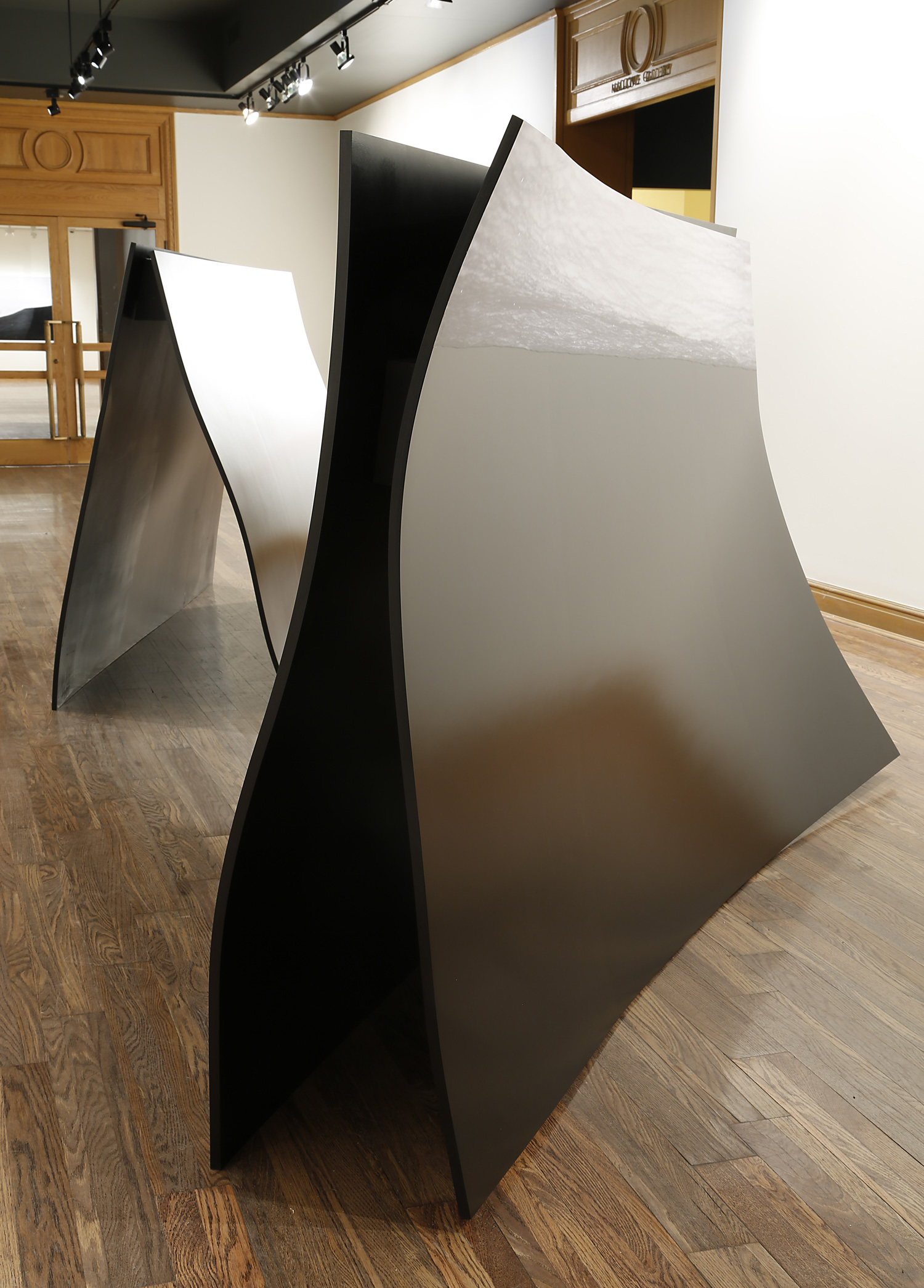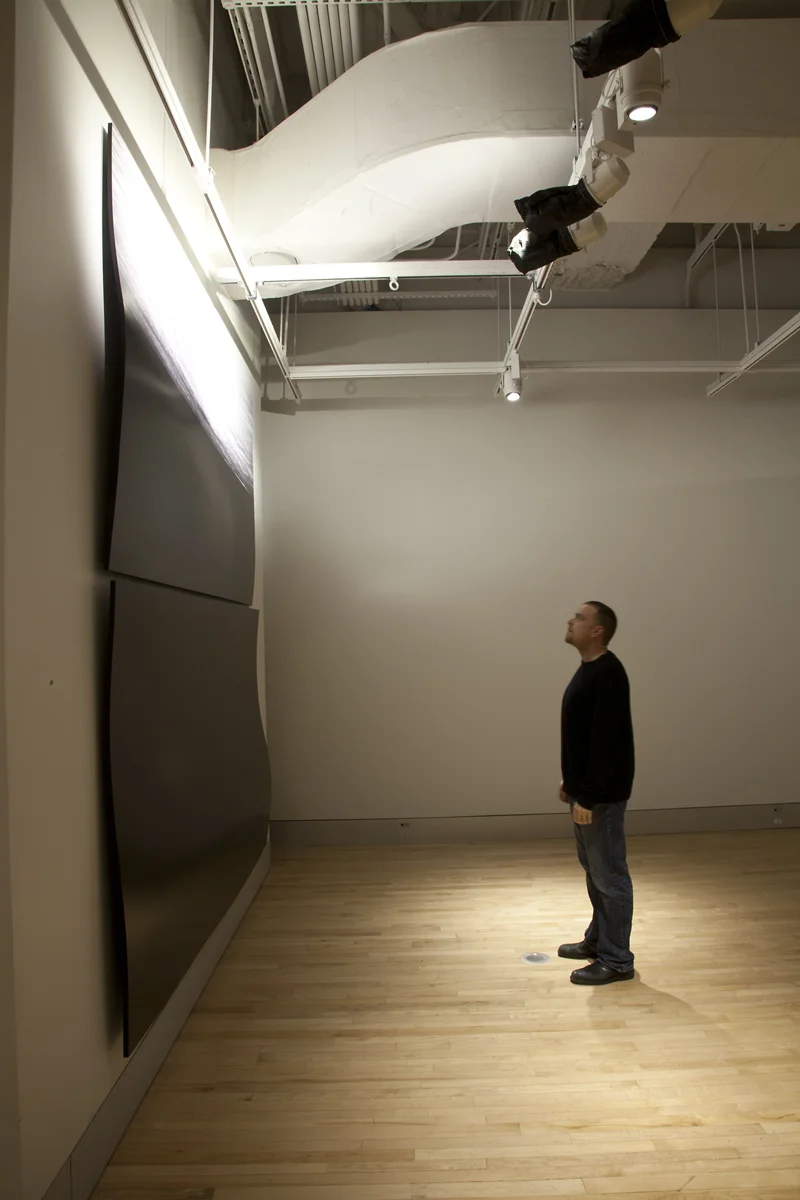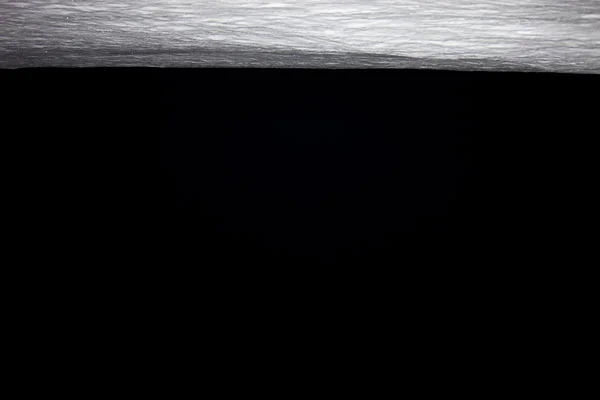Nox Borealis, 2012
Nox Borealis installation view, Canadian Museum of Nature
Digital C-prints, dimensional plywood substrates
Nox Borealis presents a series of 4 oversized photographic images where very little is depicted. Shot on the Arctic tundra of Baffin Island, they attempt to recreate a diorama at almost 1:1 scale.
Our sense of place is always mediated by the environmental conditions and geographic situation in which we find ourselves. The images here are inverted: a gesture that acknowledges the profound sense of disorientation one experiences when confronted with spaces so vast that they are difficult to behold, let alone understand. The majority of the surfaces in these images are devoted to black. This blackness presents us with both the endless space of the Arctic night (and day), and a pearlescent photographic surface that exists very much within the physical space of the viewer. Whether these 4 views are separate and distinct or whether they can be perceptually combined into a sort of panoramic and omniscient view is left deliberately indeterminant. Nox Borealis both reinforces and questions photography's ability to evoke other places and in so doing reminds us, perhaps, that the experience of looking at nature is always mediated by our notions of what is real and what is artificial.
"The images were taken in Iqaluit, the capital of Nunavut, in 2010-11. The artist was interested in travelling north to experience a sense of scale and time that is totally disorienting and utterly deceptive. The series evolves from Wright’s overarching concern for illusionism, wherein the viewer is enticed to participate in a constant perceptual loop: in which we question how we know and see. In this regard, it’s important to ac- knowledge the scale and sculptural dimensionality of his work: there is a reversal of figure and ground on such an expansive scale that it meets the viewer’s bodily awareness with immersion. Subject matter slips in and out of the viewer’s comprehension as the illusion of nothingness and an inverted snow-scape morph into a moment of immersion for the viewer.
Time is presented as a delusion in the Arctic as our sense of space and bodily relationship to the ground is re-oriented. There is a silence and stillness that results, which feels remote to the frenzied visuality of a media-saturated culture and hence speaks more to the contemplation of an integrative condition of being. As we follow the inverted ‘horizon’ line through the serialized images we walk in and through the landscape, bringing our attention to the integration of the seen, heard and thought into one panoramic whole.
The contemplation of nature has had a long discourse in the history or art: here it is rendered as sustained observation, reflection upon the interrelatedness of nature which collides with its sublime and terrifying lonely Other. Reminiscent again of Casper David Friedrich’s Monk by the Sea (1809), the viewer becomes the small and silent figure whose presence is indistinct amidst the enormity of nature’s horizon. Mysterious and inexplicable, Friedrich’s painting evokes the insignificance of man through the solitude of a figure, a method at play in Wright’s vast and remote landscape. It is within the latter thought that we may also consider the mythological resonance of these images: a poetic expression of what is elemental and brutal to the Arctic as both an image and concept. Wright does not seek the picturesque as there is something uncertain and dystopic even in his personal subversion of being ‘on top of the world,’ which results in images that are far from comfortable and familiar. It is here that we locate the preternatural: in the primeval and even, predatory nature of this desolate scape. We are poised to recognize and accept the powerful forces of nature in direct dialogue with its fragility, the thin snowy line which brings something new: an expression of contemporary anxieties about its disappearance. There is something so remote and incalculable about this place, this other side of the world which most of us will never access, but which is as crucial to our panoramic sense of self. ..."
Celina Jeffery










